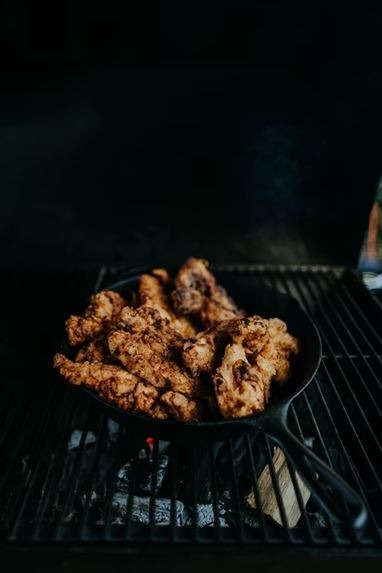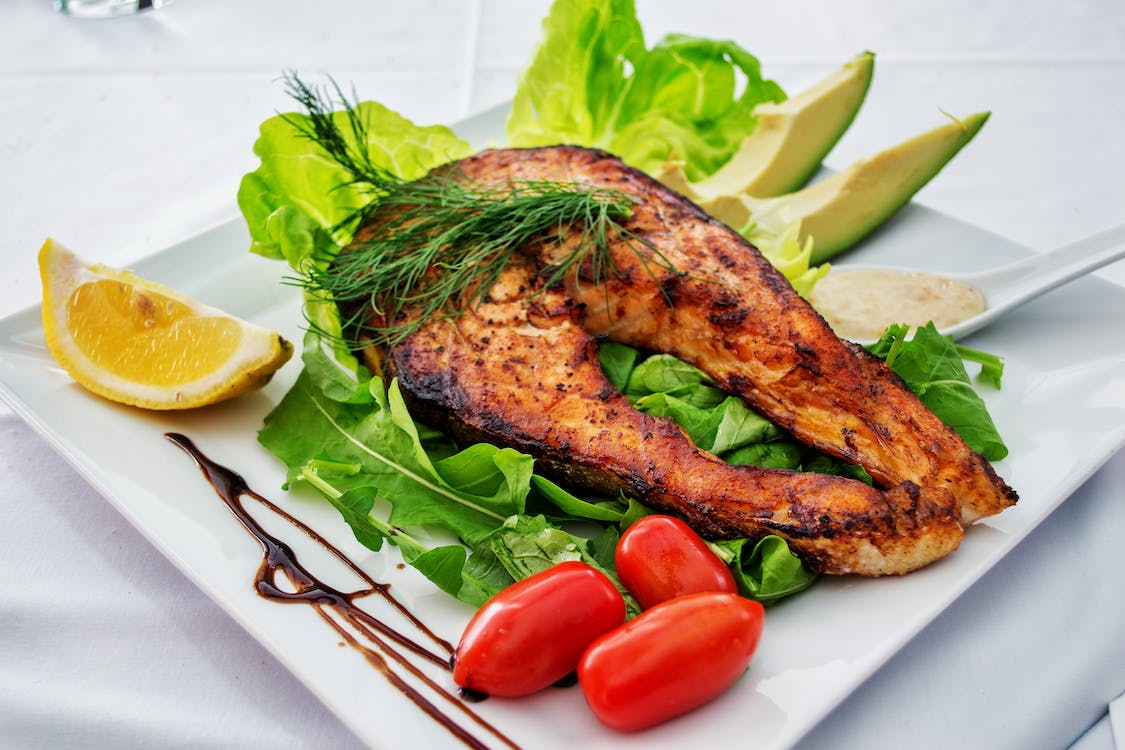Cast iron skillets were designed for cooking over an open fire, so it makes sense that we can use them on the grill from time to time too. While there’s great appeal to the idea of cooking everything directly on the grill under an open fire, there are some instances when using your cast iron pan can make grilling better.
You can add cast iron skillets on your grilling essentials list – trust us; it can really come in handy! Here are some tips on how and when to use a cast iron skillet on a grill:
Even up the heat.
Whether it’s a cheap grill or an expensive grill, all of them can use a little help getting more heat into foods. Many grills struggle with making cooking temperature even, and cast iron’s ability to absorb and distribute heat. Put a heavy cast iron skillet or griddle directly over the heat and let it heat up for 10 minutes. You can adjust the fire, but either way, the cookware will reach a certain temperature and hold it for more extended periods of time. Plus, skillets can be easily moved away from the direct heat source to cook indirectly, giving the ability to do both high and low-temperature cooking.
Sear then grill, or vice versa.
If you really want a juicy steak or burger and don’t want to worry about flame flare-ups, throw your favorite cast iron skillet onto the grill and use it for searing meats. All the juicy fat will collect in the pan, and you will still get a distinct grilled flavor. But to get a good result, make sure you know how to use a grill pan .
When it comes to cuts of meat, the best cooking process is a combination of high and low-temperature cooking. The high temp blast sears and caramelizes the texture of the meat, giving it the perfect crusting that provides the combination of textures. The low temp cooking period allows the meat to be cooked through to its desired doneness. The high-temperature phase of cooking can be done at the beginning of the end.
For the traditional searing method, put the meat directly on the cast iron and let it sizzle for a minute before turning over to repeat on the other side. If the space allows, use a fresh part of the cast iron for maximum effect. Once the meat is seared, move to an indirect grilling space and let it finish off to the desired doneness.
The reverse searing process is done the other way. Bring the meat to about 10 degrees less than its desired doneness over the indirect grilling space, then put it on the preheated cast iron to sear and finish off. One minute per side will be enough.
Just make sure that you remove the steak to a platter immediately after you’re done cooking, or the meat will keep cooking and undo your work. As a general rule, avoid leaving an empty pan on the grill for too long, or you risk ruining the pan’s seasoning.
Grill delicate foods.
Grilling is all fun unless the food being cooked is delicate. Fish, seafood, and vegetable can be a challenge. Using a cast iron pan or a griddle will help cook the food well while keeping them intact and not lost under the grill grates. This is also a perfect solution for grill items that need sauce. One example would be shrimp scampi. Shrimp can fall through the grate unless placed on skewers, but in a cast iron skillet, the whole meal can be cooked in minutes while steaks are being grilled next to it to create the perfect surf and turf meal.
Keep cooked foods warm.
When grilling a wide range of items, a piece of cast iron cookware can help you keep foods warm but not too hot that they will burn. The pan remains hot, even if it’s not placed under fire. A cast iron skillet on the edge of the grill, far from your grilling area, can help keep your food warm while the rest of the meal comes together.
Bake on the grill.
Since cast iron can retain heat evenly, it’s the best vessel for baking on the grill. Quick breads, pizza, biscuits, and simple cakes bake best on cast iron skillets. So, if you need a grill for a flavorful bake, get your cast iron cookware and grill away.
Prevent losing smaller foods between the grates.
Convection allows the smoky aromas of the grill to flavor chopped-up pieces of vegetables and other sides. Want to grill some green beans, asparagus stalks, and cherry tomatoes? A cast iron pan on the grill is your best friend. Without it, these tiny parcels of food will get lost in the places beyond the grates of your grill unless they are on skewers. But with the help of a skillet, you don’t need to puncture those vegetables anymore.
Grill burgers.
We know most people love burgers cooked directly on the grill. But an improperly cooked one can end up shriveled up and crumbly, or worse, disintegrated. If you’re a novice when it comes to grilling and searing, you can cook your burgers on a cast iron skillet or on a griddle set over the grill. Plus, instead of dripping down into the flames, all those flavorful, fatty juices from the patties stay in the pan. Of course, seasoning the burgers is important for flavor, but the juiciness with the crisp can make all the difference.
Use it to keep foods from sticking.
Unless you have an absolutely well-oiled grill, cast iron is the safer choice for grilling foods that are prone to sticking to the grates. Use a cast iron pan or griddle for cooking foods like shrimp, whole fish, scallops, and flatbreads. With a cast iron skillet, you don’t need to douse your food in oil before putting them on the grates – all you need is a slick of oil in the pan.
Turn your grill into a smoker.
You can stick the skillet right on the hot coals and turn it into a smoker! Put soaked wood ships into a cast iron skillet and put them right on the charcoal. The cast iron can slowly burn the wood to make your grill an effective yet inexpensive smoker. However, you don’t want to do this on your beloved pans though. Get an old cast iron skillet for this method.
Be careful.
The last but the most vital tip is to be careful. When on the grill, cast iron can become extremely hot. The average kitchen towel or potholder will not protect your hands from this kind of heat. Leather grilling gloves can help, but several layers might be needed to prevent injury. To prevent burns, it’s best to leave cast iron where it is and let it cool down before handling.


